
Understated, robust, affordable and versatile what's not to like about the iconic country chairs named after a famous royal town? But if you've always assumed Windsors were christened after the place where they were made, think again their association is rather less straightforward. Legend has it that George II sought shelter in a cottage in a storm and was offered a simple wooden seat. He was so impressed by it that he had a copy made and called it a Windsor chair. Sadly, however, this colourful tale is unlikely to be true, and Windsor was actually the hub where many of these chairs were sold, rather than the place they were created.
What defines a Windsor chair? Styles vary according to when and where they were made, but they always have a distinctive method of construction. Unlike many chairs, which have legs and uprights for the back support formed from a single, solid piece of wood, the components of a Windsor are all made separately. Imagine a four-legged stool with a back; sticks of turned wood are fitted into drilled holes in a solid wood seat to form the back support, and legs are similarly slotted, wedged and glued into holes underneath.
This method evolved because in the early days, various artisans were involved in the chairs' creation. Itinerant craftsmen, or 'bodgers', working in the woods were responsible for turning the legs, back sticks and stretchers on pole lathes, while seats and back splats were made by benchmen in small workshops. Finally, a framer would fit it all together and finish the piece.
This story is from the {{IssueName}} edition of {{MagazineName}}.
Start your 7-day Magzter GOLD free trial to access thousands of curated premium stories, and 9,000+ magazines and newspapers.
Already a subscriber ? Sign In
This story is from the {{IssueName}} edition of {{MagazineName}}.
Start your 7-day Magzter GOLD free trial to access thousands of curated premium stories, and 9,000+ magazines and newspapers.
Already a subscriber? Sign In
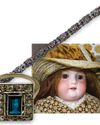
Lisa Coppin
The Cotswold Company’s chief creative officer shares the pieces that mean so much to her

TRAVEL
Six of the best pineta, plus a festive trip to Covent Garden. Review of The Orange, Belgravia by Katie Pike, travel stories
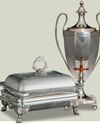
OLD SHEFFIELD PLATE
Stumbled upon by chance, this ingenious material was a more affordable option than solid silver, and well-preserved examples are particularly desirable today
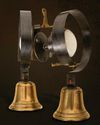
Merrily on high
Summoning servants since the 1700s, bell boards create instant English country-house style (even if you don't have any servants). Emma Longstaff dons her pinny
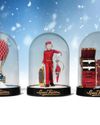
Let it snow
Nostalgic, magical and highly collectable, snow globes are curious objects of wonder that never fail to instil joy
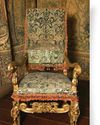
Velvet Crush
Once the preserve of the wealthy, velvet finally touched all levels of society, thanks to advances in its production process

Celebrating in the Stable
Antiques dealer Julia von Hülsen specialises in Gustavian pieces - all of which look perfectly placed in her German home
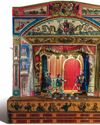
THE SHOW MUST GO ON
Victorian toy theatres charming and exquisitely designed miniature worlds have inspired theatre royalty for decades. Today, the tradition is being kept alive by a small but talented network of makers
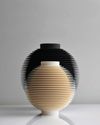
NICHOLAS LEES
The ceramic artist talks to Dominique Corlett about new ways of working with clay and blurring the edges of solid objects

Candy CHRISTMAS
Pastel hues, vintage decorations and bowls of sweet treats: the festive run-up is gloriously joyful at Bettina Færgeman's historic Copenhagen apartment, where there's an emphasis on entertaining...